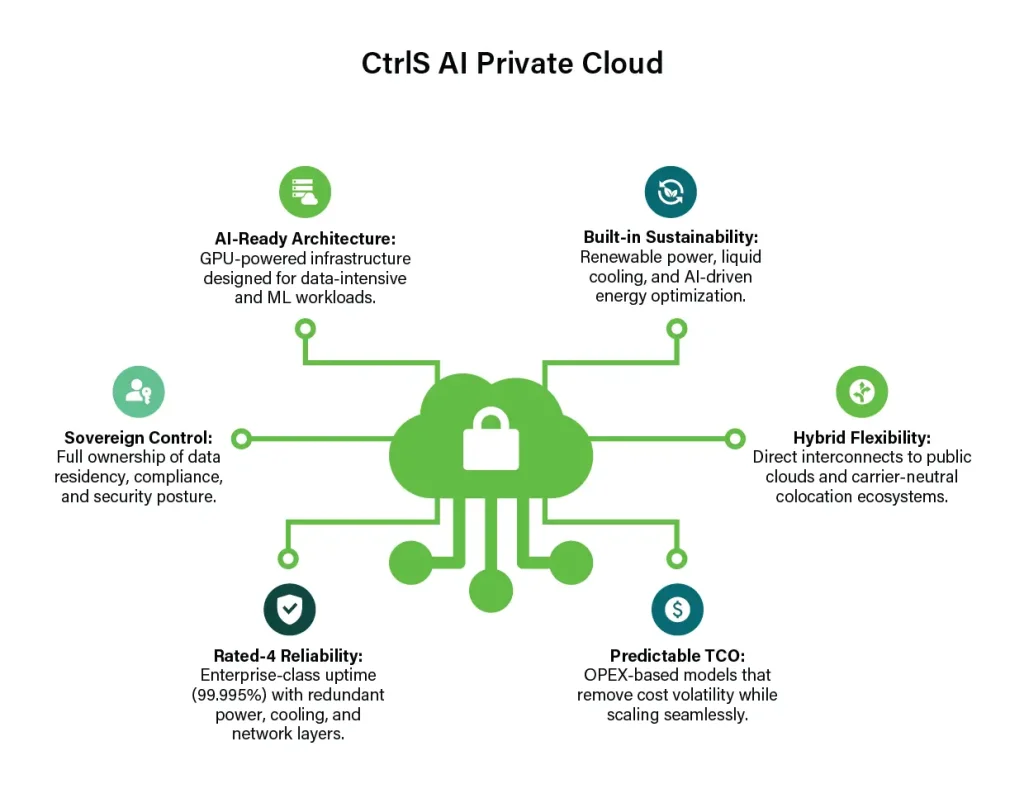When Cloud Outages Force a Strategic Rethink
When the cloud blinks, the world holds its breath.
A few hours of downtime are enough to disrupt flights, stall fintech transactions, and lock out millions of users from their favorite apps. Recent large-scale outages across global cloud platforms were not just digital inconveniences – they were a wake-up call.
For years, the cloud has been marketed as the antidote to downtime. Infinite scale. Zero maintenance. Always-on availability. Yet, when one region falters, the ripple effects travel faster than data itself. The hard truth is this: resilience cannot be outsourced.
The Hidden Fragility of Infinite Scale
Modern businesses have placed unprecedented faith in the public cloud. They’ve moved critical applications, customer data, and AI workloads to remote infrastructure they don’t see or control – often assuming redundancy equals reliability. But the recent outages proved otherwise.
The very scale that makes public clouds powerful can also make them brittle. When a single control plane or network service breaks, it cascades through dependent systems, bringing everything from productivity tools to banking transactions to a halt.
It’s a reminder that centralization creates both efficiency and exposure. And in a hyper-connected world, even a minor disruption can cost millions in lost revenue, reputational damage, and regulatory penalties.
The Cost of Convenience
The cloud has always been about convenience — fast provisioning, elastic scaling, pay-as-you-go economics. But that convenience comes with trade-offs.
When an outage occurs, you wait. You depend on someone else’s timeline, someone else’s recovery priorities, and someone else’s transparency.
Industry analysts estimate that IT downtime now costs large enterprises between $5,000 and $9,000 per minute. But the real cost runs deeper – in broken customer trust, SLA penalties, and internal operational paralysis.
It’s no surprise that what began as a rare event has now evolved into a strategic concern discussed in boardrooms: are we too dependent on someone else’s cloud?
The Repatriation Rewind
Enterprises are asking that question more often – and acting on it. According to multiple global studies, more than 40% of organizations are moving at least half their workloads back to private or colocation environments.
This movement, often called cloud repatriation, isn’t anti-cloud. It’s pro-control.
The motivation isn’t nostalgia for on-prem; it’s about regaining governance, predictability, and uptime assurance.
Just as companies diversified their supply chains after the pandemic, they are now diversifying their digital foundations. A single point of failure – whether geographic, operational, or vendor-specific – is no longer acceptable in an era where milliseconds matter.
Workload Placement: A New Discipline
The smartest organizations aren’t abandoning the cloud; they’re getting strategic about what lives where.
Every workload has a personality — a balance of risk, sensitivity, and compute demand. And that personality determines its ideal home:

This “right-fit” model – sometimes visualized as a control-vs-scale decision tree – is now the foundation of modern digital architecture.
It’s not about cloud versus data center. It’s about cloud and data center working in symbiosis.
Why Private Cloud Is Back in the Spotlight
Private cloud has evolved far beyond the old “server rooms with a fancy name.” Modern private clouds deliver the agility of public platforms while offering the control, compliance, and customization enterprises crave.
They’re especially critical in the AI era, where workloads demand massive compute power, GPU clusters, low latency, and predictable costs.
Running AI models, training pipelines, or high-frequency analytics in a generic public cloud can quickly become cost-prohibitive and performance-unreliable.
That’s where CtrlS AI Private Cloud brings a distinct advantage:

With this approach, enterprises get the best of both worlds — the elasticity of the cloud and the assurance of dedicated infrastructure. It’s agility with accountability.
The Economics of Control
Repatriation isn’t just about fear of outages; it’s also about financial clarity.
As organizations mature, their cloud usage stabilizes. Elastic workloads flatten, and constant pay-per-use billing begins to outweigh benefits. Studies show that over a three-year horizon, steady-state workloads cost 30–50% less when hosted in private or colocation environments.
Moreover, colocation and private cloud models allow for custom redundancy and proximity — placing workloads closer to users or regulatory zones, cutting latency and compliance risk simultaneously.
Predictable costs. Tailored resilience. Local sovereignty. That’s control redefined for the digital era.
Control as the New Cloud Currency
As enterprises build for the AI decade, they’re realizing that scale alone doesn’t equate to stability.
The next wave of infrastructure strategy isn’t about chasing the biggest platform — it’s about architecting for resilience, accountability, and choice.
A few minutes of outage can translate into millions in losses, but a few smart architectural choices can safeguard years of customer trust.
The winners will be those who design hybrid ecosystems that blend the elasticity of cloud with the certainty of private infrastructure.
Because in the end, innovation may thrive in the cloud — but control is where it stays alive.
Ready to Reclaim Control?
Explore how CtrlS AI Private Cloud combines GPU-powered performance, Rated-4 reliability, and full data sovereignty – so your innovation never depends on someone else’s uptime.
Learn More about CtrlS AI Private Cloud

Ranjit Metrani, President - Managed Services, CtrlS Datacenters
A business leader with over 30 years of experience, Ranjit has a proven track record of delivering high-scale growth in leading organizations in IT services, cloud, and datacenter industries. At CtrlS, Ranjit spearheads the Managed Services business, with a focus on enterprises' driving digital transformation. His rich expertise spans GTM strategy, infrastructure, software, sales, partner management, and driving customer growth through digital transformation.

